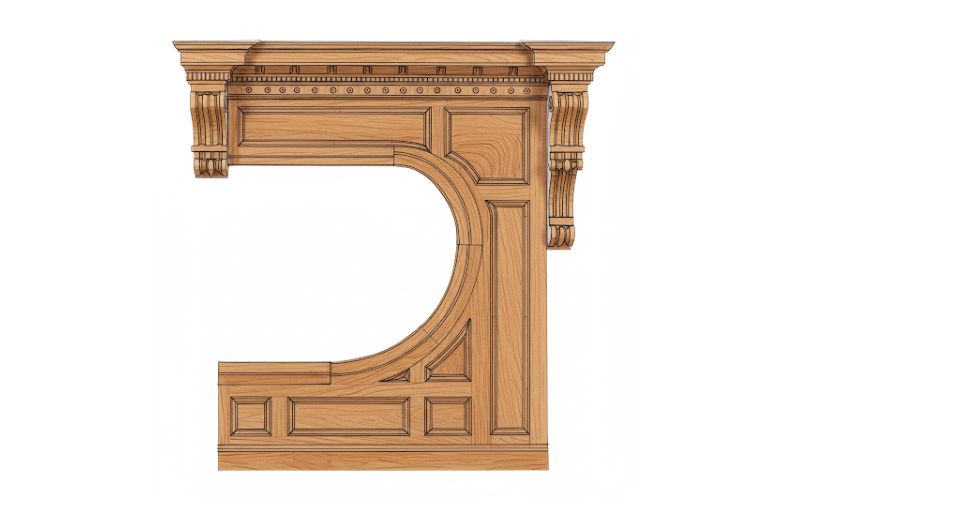
Apr 26, 2025

Metastat Insight latest research publication depicts potential transformations poised to impact the Global Millwork Market; it will capture the effects of craftsmanship, material innovations, and design tastes on the rhythm of the industry. Millwork has always been referred to as an exquisite architectural art form and a highly personalized construction mechanism quietly adapted to changes in demand or style and construction practice. It is still perceived to some extent as the old craft; however, the shift occurring in the market today presents a direct juxtaposition between timeless legacy and new interpretation. Doors, mouldings, stair parts, cabinetry, and built-in storage are no longer seen merely as functional solutions; they now form part of the experience of perceiving, traveling through, and enjoying space-whether it is in residential or commercial realms.
Global Millwork market is estimated to reach $115,534.82 million in 2025 with a CAGR of 3.4% from 2025 to 2032.
The considered use of millwork by designers and builders goes beyond its status as construction material; this includes its ability to convey story or mood. Manipulation of wood texture and finishes, coupled with intricate detail work, has helped in the creation of ambience. From austere in urban apartments to lavish in boutique hotels and luxury residences, millwork applications have transformed. Its validity today encompasses both mass-produced building enterprises and extremely personalized architectural ideas. Due to this versatility, perhaps the most understated of the changes to have graced the Global Millwork Market occurs venturing to place traditional production methods alongside new design interpretations, empowered by advanced processing techniques.
Material selection increasingly becomes an exercise in fine judgment, as appearance is weighed against considerations of sourcing, durability, and maintenance. While hardwoods certainly remain in the limelight, their engineered counterparts and alternative composites have entered into the discussion, providing some promise of enhanced consistency and occasionally less environment impact. These materials are good for ensuring the replication of a desired aesthetic through many builds. Although custom, hand-finished pieces find acceptance in some sectors, especially where identity and originality are concerned, the intersection of mass production and custom work is what distinctly defines the present-day market catering to both high-volume developers and singular luxury projects.
User experience in the millwork is being explored by architects and interior designers. Strategic millwork use in retail spaces, libraries, and offices helps define zones, direct movement, and soften acoustics. Other decorative functions have been added to benefits like storage, seating, and use as partitions and for integrating light with built-in furnishings. This multi-functionality has caught the attention of designers interested in producing more complex installations where millwork is engineered for purposes other than those for which it was initially designed. Here is something that provides the intersection between structure and art: a strong aesthetic with functional efficiency.
Methods of manufacturing have been changing pretty often, and much of this change has occurred while hidden from public view. CNC machines, better joinery tools, and software for designing digitally are speeding up production times and offering all of the detail that one would expect from handwork. With this savant combination of machine precision and human oversight, millwork products keep their good looks while conforming to modern needs for consistency and reliability. There is value in advancing every such improvement; a value not in replacing traditional skills but in developing them so that the artisan can close into detail and complexity while machines do repetition. In this way, they quietly redefine expectations across both ends of the supply chain-from production floors to architectural studios.
Shifts in the aesthetic experience continued to take place on a global backdrop. Scandinavian minimalism, Japanese precision, and the Mediterranean's warmth have all taken their turn in terms of millwork conception and execution. These benefits are more or less what a client can expect when the space reflects multiple influences across geographies and cultures. Millwork is adjustable enough to provide that facility for cross-cultural expression. Whether through wood grain, finish type, or silhouette, these designs tell a heritage-inspired, fresh, innovative story. The Global Millwork Market accommodates the fine line between trends and techniques that can be customized across regional and styling boundaries.
Distribution networks are also subtly experiencing changes that do not go without great impacts. Those are joined with changes in the supply chains, possible adjustments in available raw materials, or the delay in project timelines that all come into play in millwork products flowing from source to location. The interplay between local fabricators and international distributors manifests one quiet sophistication with logistics and resource management. Build small and large commercial remodels, the timelines and customizations are tightly controlled, and this efficiency is quietly shaping market behavior. This part is pretty much what goes on behind the scenes, and the result manifests in how projects get fast and smooth assembly.
Design software and visualization tools allow clients and architects to see themselves in millwork concepts before a piece of material is ever cut. As a result, a lot of experimental work becomes possible as early as visibility in materials, finishes, and joinery. Sometimes, these models that mimic reality in the physical world help reduce error while aligning expectations, especially in tight budgets and aggressive timelines. Among other things, tools like this make very close strides between ideas and reality by translating design into manufacture with higher fidelity.
The Global Millwork Market Report presented by Metastat Insight paints a comprehensive picture of an industry that silently influences the way we build and live and at the same time is changing according to both style and material developments.
Drop us an email at:
Call us on:
+1 214 613 5758
+91 73850 57479